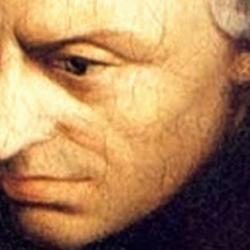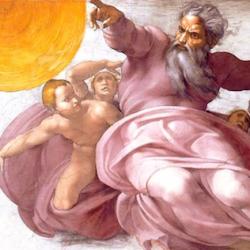As Mark Stoll pursued research on the history of American environmentalism, he discovered that “A huge proportion of the leaders of environmentalism during its mid-twentieth-century heyday were raised Presbyterian.” As late as the Progressive Era conservationism of 1900-1920, “Progressive conservationists were nearly all raised Presbyterian. The almost complete unanimity astonished me. Presbyterians dominated Federal conservation for several decades and then vanished as completely as Congregationalists, only to resurface in the environmental movement after World War II.” The leaders were not practicing Presbyterians, and eventually the Presbyterian dominance broke up, but for a long time “Presbyterians had given the movement a moral and political center that no one has replaced.”
In his forthcoming Inherit the Holy Mountain, Stoll argues that the Presbyterian background is not accidental. Reformed theology, he suggests, developed its own moralistic aesthetic of the natural world that fed into American landscape painting, American conceptions of the wilderness as a place where God’s grandeur is displayed, and a moral drive to care for the land. Stoll makes the striking claim that Calvinist aesthetics was more at home with natural beauty than cultural beauty, since the latter was considered so thoroughly tainted by human sin. Place this Calvinist aesthetic in an American context, and you have the makings of a uniquely American appreciation of rugged natural vistas.
Stoll devotes a great deal of space to an analysis of Thomas Cole’s Oxbow, a painting that he claims is full of biblical allusions that express the American Calvinist aesthetic, with its strong moral overtones: “the Reformed themes of God’s presence in nature, the desirability of godly use of nature’s abundance, and the dangers of destructive avarice. Cole began the ‘Essay’ with a lament for those who could not see nature’s beauty, since they were cut off from God: ‘For those whose days are all consumed in the low pursuits of avarice, or the gaudy frivolities of fashion, unobservant of nature’s loveliness, are unconscious of the harmony of creation. . . .’ The blind destructiveness of his countrymen appalled Cole: ‘. . . The beauty of such landscapes are quickly passing away—the ravages of the axe are daily increasing—the most noble scenes are made desolate, and oftentimes with a wantonness and barbarism scarcely credible in a civilized nation.’ Cole fervently affirmed the world’s purpose: ‘It has not been in vain—the good, the enlightened of all ages and nations, have found pleasure and consolation in the beauty of the rural earth. Prophets of old retired into the solitudes of nature to wait the inspiration of heaven. It was on Mount Horeb that Elijah witnessed the mighty wind, the earthquake, and the fire; and heard the ‘still small voice’—that voice is yet heard among the mountains! St. John preached in the desert;—the wilderness is yet a fitting place to speak of God.’”
Stoll also presents a neat genealogy of Milton’s depiction of Eden, which also has an American echo: “Reformed fascination with Eden and the Fall began small in the sixteenth century and grew into something akin to an obsession in the seventeenth. In his Commentaries on Genesis, Calvin had betrayed an interest in the earthly Eden by inserting a map of its likely original location, which he placed in Mesopotamia. English editors included a version of Calvin’s map in the Geneva Bible, the translation long favored by Puritans. The spell of Eden strengthened in the next generation of French Protestants, the Huguenots, when Guillaume de Saluste du Bartas reimagined Eden in verse. In answer to Calvin’s calls to Christianize all aspects of life, including poetry and the arts, and to glorify God in all undertakings, Du Bartas wrote the first long poems in French on sacred subjects and popularized the adaptation of classical forms of poetry for Christian instead of pagan or secular themes. In 1578, he published La Sepmaine; ou, Creation du monde, his poetic retelling of the six days of creation. This colossal international bestseller appeared in at least 42 editions and numerous translations and inspired commentaries and imitators. . . . Joshua Sylvester’s translation of La Sepmaine and its sequel La Seconde Sepmaine, published in 1605 as The Devine Weekes and Workes. The Devine Weekes had many fervent devotees among the Puritans, not least Anne Bradstreet, whom a dedicatory poem in The Tenth Muse called ‘a right Du Bartas Girl.’ . . . Milton knew The Devine Weekes from boyhood and may have had it at hand in the 1650s and 1660s while writing his own great epic of Genesis, Paradise Lost.”














